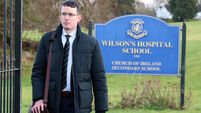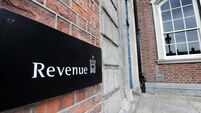Janet Yellen: The woman behind an historic US rate decision

She is a year short of her 70s, with a severe bob of silver-white hair and a flat Brooklyn accent.
Janet Yellen also happens to be the head of America’s central bank, the Federal Reserve and last week, she gave the go-ahead for the first rise in US interest rates since 2006.
It was a decision the prospect of which has sent tremors across the financial and commodity markets, particularly those in over borrowed countries.
The move has been long anticipated.
Ms Yellen has been signalling for several months that an increase was on the cards as the US sets out to wean itself off its rich diet of easy money.
The Fed chair does not like to spring surprises. However, this is not to say that the decision is not controversial.
At the weekend, a leading US-based economist and former member of the Bank of England inner circle, David Blanchflower, warned that there was a 55% chance that Yellen and her Fed colleagues would be forced to reverse its landmark move before long.
Yellen also moved to raise rates against the advice of another leading figure in the word of global finance, Christine Lagarde, head of the IMF.
So who is Janet Yellen and how did she get to where she is, at the global decision-making summit?
When, two years ago, she became the first woman to head up the Federal Reserve and the first to head a central bank in any Group of Seven industrialised country, Ms Yellen was profiled by online publication forward.com.
It interviewed several former classmates from her school in Brooklyn.
She grew up in what was described as a cosy home, the daughter of intellectuals.
As a schoolgirl, she was known as a stealth operator.
“She only called attention to herself when we compared marks. She always got the highest marks,” said one.
“She was a self-described nerd close to the grindstone”, said another.
Her mother, Anna, used to hold meetings at home as ‘den’ mother to a group of young scout cubs, helping to widen Janet’s social circle.
In 1963, she became editor in chief of the school newspaper, penning an interview with herself.
The family travelled widely to places like Haiti, Scandinavia and Ireland.
The teenager grew fond of off-Broadway plays and took a course in bridge.
Friends recall that she fell in love with economics early on after she took her first course and phone conversations revolved around the subject from then on.

She ended up in Yale where she earned a doctorate under James Tobin, a key adviser to President John F Kennedy and strong disciple of great thinker John Maynard Keynes.
Tobin went on to land a Nobel Prize, also becoming famous for a proposal to tax financial transactions known as the Tobin tax.
However, the key influence on her life has been her husband George Akerlof, another winner of the Nobel prize for Economics, in 2001.
The pair met while working at the US Federal Reserve in Washington DC in the mid 1970s. George is six years older than Janet.
They had a son who — surprise, surprise — is an economics professor, in Warwick University.
Akerlof made his name for his research into the prevalence of market malfunctions, where buyers and sellers have differing access to information.
The two have worked closely together.
In 2001, Janet paid this tribute to George who is well known for his knowledge of other disciplines including anthropology, psychology and sociology.
Born in New Haven in 1940, George was influenced by his experience of growing up in the immediate aftermath of the Great Depression.
As he recalled: “I have always been interested in why people are poor. What economics is about is trying to prevent poverty insofar as that is possible.”
A profile of the two in Business Week concluded: “Colleagues say Akerlof came up with the breakthrough ideas, but it is Yellen who supplies the academic rigour.”
Tobin agreed: “She provides the discipline that makes them go.”
The pair taught together at the London School of Economics before moving to California where both taught at Berkeley University.
In the 1990s, Janet headed President Bill Clinton’s Council of Economic Advisers and in the early 2000s she became chair of the San Francisco Federal Reserve before assuming the key position as deputy to Ben Bernanke, her predecessor as chair of the US Fed.
Bernanke’s predecessor, Alan Greenspan has shipped damage for allowing the boom to get out of control, but Bernanke — an expert on the Great Depression — is seen as someone who played a key role in warding off another prolonged depression.
Yellen was a willing deputy who had warned an asset price bubble was forming.
While she has a reputation as a monetary ‘dove’, strongly in favour of the recent policy of quantitative easing, those who have studied her actions say she can be hawkish when needs be.
In 1996, she told Greenspan to warn him leaving rates too low for too long could fan the flames of inflation.
As deputy head, she was instrumental in persuading the Fed to adopt a 2% inflation target, arguing this was better than having no target at all.
She fought for years to get this in place.
In 2007, she helped revamp Fed forecasting , making them a regular quarterly affair while also extending the future horizon to three years to serve as a guidepost.
Yellen speaks simply and clearly.
By raising federal interest rates, Janet Yellen is embarking on a course that bears her own imprint: https://t.co/5p6xJQZwLs
— The New Yorker (@NewYorker) December 17, 2015
In setting out to relax the quantitative easing, or easy money, regime put in place by her predecessor, she has had to tread with care.
Moves last year to initiate a modest reversal provoked a big market tantrum.
The Fed was forced to retreat in the face of wails on Wall Street.
In the run-up to last week’s decision, a head of steam has built up, with many in the markets suggesting a further delay in the sanctioned increase of 0.25% would actually unsettle the markets by raising fears the Fed “knew something (about a possible meltdown) that we don’t”.
Now, it seems the era of ‘bargain basement’ interest rates across the Atlantic could be at an end.
Yellen has indicated the intention for the Federal funds rate to reach 1.25% in late 2016, 2.5% in late 2017 and 3.25% by late 2018 bringing it back close to the long-term level.
In the process the Fed has parted company from its fellow central banks and from the ECB, in particular, prompting some to suggest that the dollar will strengthen further in 2016.
The IMF has warned of further stress being caused in emerging markets, particularly those with heavy debts or those depending on commodities.
A huge question remains over China and by extension, the global economy.
David Blanchflower, a professor at Dartmouth University, suggests the Fed has shot wide of the mark in targeting US unemployment — now officially down at 5%.
He points to widespread under-employment and to the large numbers having withdrawn from the labour force, citing low rises in wages. We shall soon find out whether he is right.
The questions over Yellen’s historic decision serve as a reminder that the practice of economics at the highest level is as much art as it is science.
Whatever happens, one suspects that the lady from Brooklyn with the soft voice and the razor sharp brain will stay calm and carry on.












